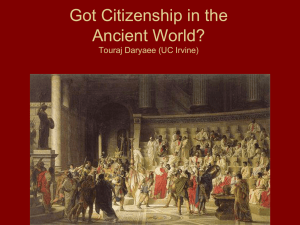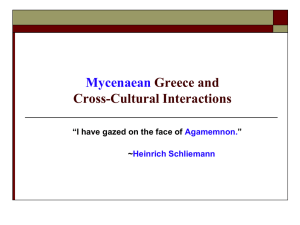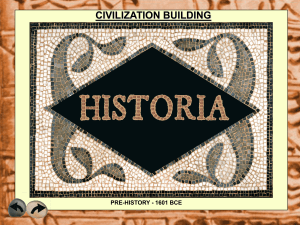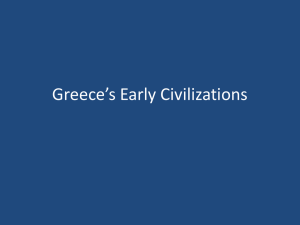File
advertisement
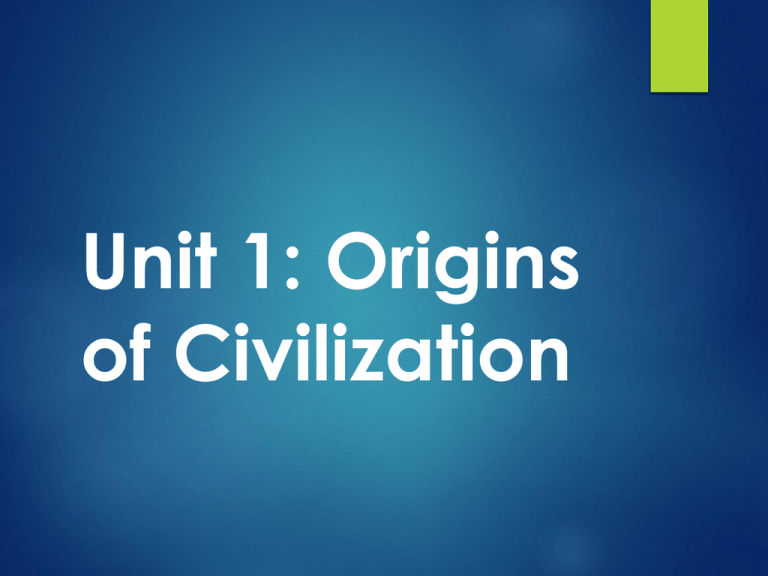
Unit 1: Origins of Civilization Early Humans The earliest humans could not read or write, so naturally there are no written records that tell us about their life. We rely on fossils, artifacts, and the work of archaeologists and anthropologists to construct the very ancient past. Archaeologists – someone who examines the past through remnants and artifacts to analyze the way in which earlier humans or cultures lived (ie: what they ate, how tall they were, how they survived) Anthropologists – someone who studies social and physical characteristics of humanity through examinations of history and past (ie: how they interacted with each other) Early Humans Fossil evidence shows that humans originated in East Africa over 2.5 million years ago. Evidence of African origin In 1974, Donald Johanson found a complete skeleton of an adult female in Ethiopia. Named LUCY after the Beatle’s song. It is the oldest known human fossil. Mary Leakey discovered humanlike footprints in 1978 in Tanzania that proved they walked upright and had feet exactly like ours. Stages of Early Human Development Create a timeline across your notes and chunk the following time spans together 4,000,000 BCE – 1,000,000 BCE 1,500,000 BCE – 250,000 BCE 250,000 30,000 BCE – 30,000 BCE BCE – 10,000 BCE 2,500,000 BCE – 8,000 BCE 8,000 BCE 4,000,000 BCE Paleolithic Age Paleolithic Age Means “Old Stone” Age Humans Hunters Small made tools (men) & gatherers (women) bands of 20-30 humans NOMADIC place) (moved from place to Stage 1 4,000,000 BCE Stage 1 4,000,000 BCE – 1,000,000 BCE Australopithecines Hominids any member of the family of twolegged primates that includes all humans Opposable thumbs Homo Habilis “Man of Skill” Found in East Africa Created stone tools Found shelter in caves Left behind cave paintings Stage 2 4,000,000 BCE Stage 2 1,500,000 BCE – 30,000 BCE Homo Erectus “Upright Human Being” Bipedalism – the ability to walk upright on 2 feet Used larger and more varied tools Migrated to Europe and Asia First to use fire c. 500,000 BCE Stage 3 4,000,000 BCE Stage 3 200,000 BCE – 10,000 BCE Homo Sapiens “Wise Human” Neanderthals (200,000 BCE-30,000 BCE) Stage 3 4,000,000 BCE Stage 3 200,000 BCE – 10,000 BCE Homo Sapiens “Wise Human” Neanderthals (200,000 BCE-30,000 BCE) • 1st to bury their dead • Made clothes from animal skins • Lived in caves and tents Stage 3 4,000,000 BCE Stage 3 200,000 BCE – 10,000 BCE Homo Sapiens “Wise Human” Neanderthals Cro-Magnons (200,000 BCE-30,000 BCE) (40,000 BCE-10,000 BCE) • 1st to bury their dead • Made clothes from animal skins • Lived in caves and tents • Homo Sapiens Sapiens (wise, wise human) • Most closely related to modern humans Stage 4 4,000,000 BCE Stage 3 200,000 BCE – 10,000 BCE Homo Sapiens “Wise Human” Neanderthals Cro-Magnons (200,000 BCE-30,000 BCE) (40,000 BCE-10,000 BCE) • 1st to bury their dead • Made clothes from animal skins • Lived in caves and tents • Homo Sapiens Sapiens (wise, wise human) • Most closely related to modern humans • Around 30,000 BCE they replaced Neanderthals End of last Ice Age ~ 10,000 BCE The Neolithic Age As the ice melted, the Neolithic Age emerged from the Paleolithic Age. “Neolithic” -> “New Stone” Age 10,000 BCE – 4,000 BCE Gradual shift from: Nomadic lifestyle Hunting & Gathering settled, stationary lifestyle Systematic agriculture and the domestication of animals
